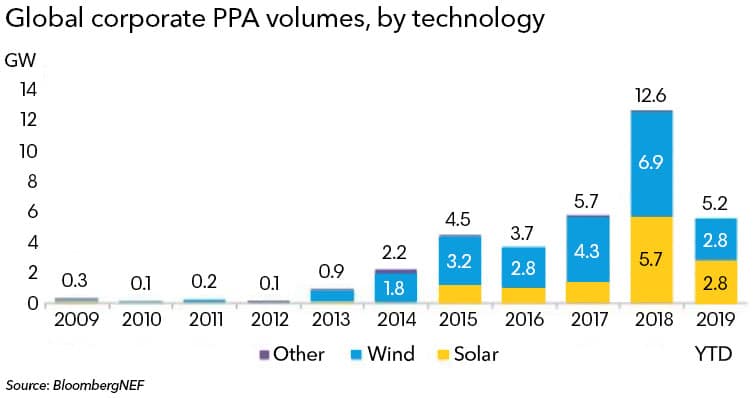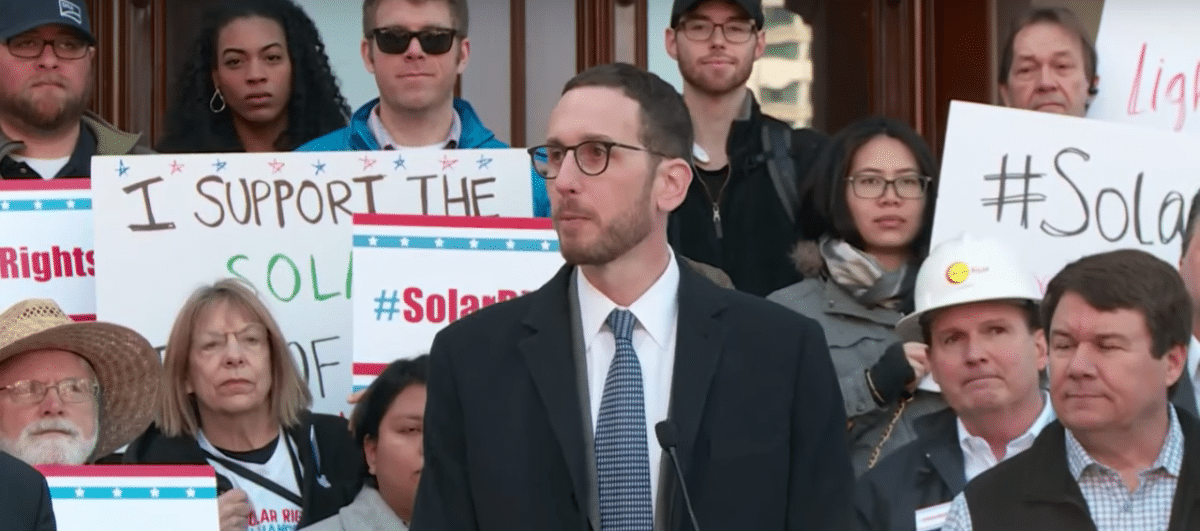Solar Bill of Rights goes back to committee – After being gutted of its most important components, California’s Solar Bill of Rights has been sent back to the Senate Committee on Energy, Utilities and Communications.
KB Racking releases three new mounting systems – “KB Racking has successfully launched three new mounting systems. BarnRack 2.0 and SeamRack 2.0 are newly updated metal roof systems and ReziRack 2.0 is a shingle roof mounting solution. The robust racking solutions feature low overall system weight, the minimum number of components and accommodate all standard size framed PV modules.” Source: KB Racking
Bankruptcy court ruling could let PG&E slip its solar contracts – A bankruptcy court judge last week ruled that his court, not the Federal Energy Regulatory Commission (FERC) has jurisdiction over the contracts signed by bankrupt utility Pacific Gas & Electric Company. Our take: While keeping FERC and the Federal Power Act out of the bankruptcy process has been seen as a way to let PG&E out of expensive legacy renewable energy contracts, this fight is a long way from over. Source: Greentech Media
Maine could require energy storage targets – A bill (LD 1614) has passed both houses of the Maine legislature will require a study of the potential benefits of energy storage for the state. If found beneficial, the state will be required to set targets for energy storage deployment.
Michigan regulators approve Consumers IRP – “Consumers Energy today received approval from state regulators for its Clean Energy Plan, ushering in a new era for renewable energy in Michigan… The Clean Energy Plan puts Consumers Energy on a path to eliminate coal; reduce carbon emissions by over 90 percent; and meet customers’ future electricity capacity needs with 90 percent clean energy resources by 2040…
Among the Clean Energy Plan’s highlights:
- Coal Free & Reduce Carbon Emissions: Carbon emissions from power plants will be reduced more than 90 percent by 2040…
- Clean Energy: Meeting 90 percent of customers’ electricity capacity needs through clean energy resources like renewable energy, energy waste reduction, and energy storage by 2040; with the addition of 5,000 megawatts of solar energy through competitive bidding even earlier by 2030.
- Innovative Energy Solutions: Consumers Energy will use tools such as incentives for customers to use energy more efficiently to avoid the need to invest in new, large power plants.
Source: Consumers Energy
13 MW solar plant in Virginia – NASA Wallops Flight Facility is officially getting a solar system, as ground was broken on a 13 MW system that will accommodate up to 80% of the center’s electricity usage. The project is being developed by Ameresco, and is anticipated to save the facility $537,000 in its first year alone. The project will consist of both ground-mounted arrays and solar carports. Source: DelMarVA Now
Duke’s new solar program – Duke Energy’s customer pilot program for Indiana has been approved by state regulators, paving the way for businesses, schools and nonprofits to lease a solar energy setup from Duke Energy for a period of up to 20 years. Under the lease, Duke would install, operate, maintain and own the facility, while the customers receive all of the kilowatt-hour output of the solar energy equipment through net-metering Source: Duke Energy
Vistra new retail solar offering – Vistra Energy today announced its latest retail electricity product, TXU Energy Pure Solar, which provides residential customers easy access to solar power. All of the energy purchased comes from solar farms, including the company’s Luminant Upton 2 Solar Power Plant, Texas’ largest solar facility… This value-add allows customers to continue to choose the plan that’s right for them, based on the way they use electricity, but now they can also choose solar energy. Customers can add TXU Energy Pure Solar to any plan for a nominal fee and ensure that solar energy is being produced and delivered to the ERCOT grid in amounts equal to their energy usage. Source: Vistra Energy
Massachusetts extends deadline for policy comments – The deadline to submit comments in regards to the RPS Class I and RPS Class II regulations have been extended to 5 PM on July 26, 2019 by the Department of Energy Resources in Massachusetts. Written comments can be submitted to John Wassam electronically to DOER.RPS@mass.gov or via mail to the Department of Energy Resources, 100 Cambridge Street, Suite 1020, Boston, MA 02114. Source: DOER
BNEF: Wind, solar equal in corporate PPAs so far this year – After years of wind dominating corporate procurement, wind and solar deals signed to date in 2019 are about equal, at 2.8 GW each, for a total of 5.7 GW of corporate renewable energy deals signed. Source: Bloomberg NEF

This content is protected by copyright and may not be reused. If you want to cooperate with us and would like to reuse some of our content, please contact: editors@pv-magazine.com.










By submitting this form you agree to pv magazine using your data for the purposes of publishing your comment.
Your personal data will only be disclosed or otherwise transmitted to third parties for the purposes of spam filtering or if this is necessary for technical maintenance of the website. Any other transfer to third parties will not take place unless this is justified on the basis of applicable data protection regulations or if pv magazine is legally obliged to do so.
You may revoke this consent at any time with effect for the future, in which case your personal data will be deleted immediately. Otherwise, your data will be deleted if pv magazine has processed your request or the purpose of data storage is fulfilled.
Further information on data privacy can be found in our Data Protection Policy.